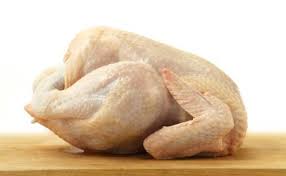Soo…there ain’t Brown Recluse Spider in Virginia eh??? Or so ‘they’ say according to ‘their’ maps. I personally know better from about 20 years ago when I was bit one time on the shoulder doing new construction work and then about 6 years ago when I was bit not once, not twice but THREE times on my calf.
Never saw one though up front and personal until yesterday afternoon…looky what I saw on my ‘screen’ to my workshop only 3 foot away from me:

Yep, that’s a Brown Recluse spider, born, breed and hiding out waiting for me to walk through the ‘screen’ (which is actually a sheer curtain I hang up at the shed door).
Here is ‘map’ where they are most commonly found:

The below information is taken directly from an OSHA Fact Sheet (link at end)
The brown recluse belongs to a group of spiders commonly known as violin spiders or fiddlebacks. The characteristic fiddle-shaped pattern is located on the top of the leg attachment region (cephalothorax). Because they are secluded and withdrawn, as their name implies, the brown recluse avoids open spaces. Brown recluse spiders are dangerous and they can bite and inject toxic venom.
Identification
• Body size: 1/4 to 3/4 inch
(6.4-19.1mm)
• Color: Golden brown
• A dark violin/fiddle shape
(see top photo) is located on
the top of the leg attachment
region (cephalothorax) with
the neck of the violin/fiddle
pointing backward toward
the abdomen.
• Unlike most spiders that
have 8 eyes, the brown
recluse has 6 eyes. The eyes,
arranged in pairs – one pair
in front and a pair on either
side – can be readily seen
under low magnification.
Habitat
The Brown Recluse Spider
builds small retreat webs
behind objects of any type.
Symptoms
• The severity of the bite may
vary. Symptoms may vary
from none to very severe.
• The bite generally becomes
reddened within several hours.
• There is often a systemic reaction
within 24-36 hours characterized
by restlessness,fever,
chills, nausea, weakness
and joint pain.
• Tissue at the site of the bite
and the surrounding area dies
and eventually sheds.
Protection
• Wear a long-sleeved shirt, hat,
gloves, and boots when handling
stored boxes, firewood,
lumber and rocks, etc.
• Inspect and shake out clothing
and shoes before getting
dressed.
• Use insect repellants, such as
DEET or Picaridin, on clothing
and footwear.
Treatment
• Clean the bite area with soap
and water.
• Apply ice to the bite area to
slow absorption of the venom.
• Elevate and immobilize the
bitten extremity.
• Capture the spider, if at all possible,
for identification purposes.
• Seek medical attention.
https://www.osha.gov/OshDoc/data…Facts/brown_recluse_spider.pdf
Here is something that they don’t tell you: most of the time you won’t even KNOW you have been bitten, let alone actually SEE the sucker that bit you. I know the times I have been bitten I didn’t even think about a brown recluse bite until after the tissue in the area started necrotizing and the fist time it got so big (the necrotized area) that it was the size of half dollar and I wound up at the ER for something else and the nurse saw it (the wound) and freaked. The next time I was bit I thought they were bug bites until they began ‘pitting’ (necrotizing) and I immediately remember the first time I was bit by a recluse.
And medical attention? They give you Keflex and send you home and tell you ride out the WEEKS that it will take your body to fight the venom and heal…yeah, no joke…nothing to do except prevent and ‘infection’ and keep the wound clean…seriously..
And in a shtf situation or you can’t afford to go to the doctor just to be patted on the head and handed an antibiotic for hundreds of dollars, what are you going to do?
The ‘treatment’ advice above is great general ‘bite’ advice…but personally here is how I have always taken care of brown recluse bites (for some reason I am a recluse magnet) with EXCELLENT results:
BERGAMOT ESSENTIAL OIL DROPS STRAIGHT ON THE BITE
4-6 times a day
Seriously, that it…the first bite since it was so large I used hydrogen peroxide to clean out the dead tissue…let it dry out and then applied the bergamot essential oil, but the wound healed within 10 days and I used no antibiotics…minimal scaring too.
The next I was bitten I immediately applied the bergamot essential oil straight on the bites and while the skin discolored the necrotization only got to be about the size of eraser head and then healed within 4 days…
And that is all I DID…and now, living out the woods almost any bite that I know for sure isn’t a tick bite or mosquito or fly bite (ugh, May Flies and these little orange flying things around here), out comes the bergamot and I forget about it…no issues…
One strong word of caution: this is just what I do and I am not advocating that YOU do this…use your head and if you can see your doctor, especially if you become very sick…just use your head please… I believe that prevention is key in avoiding the doctor and what I have written is what works for ME. You may want to try it yourself or keep a bottle of the bergamot essential oil in your bug out bag or if you go camping just to ‘prevent’ infection, etc. especially if you are not sure of what bit you (since normally you won’t feel the bite from this spider). Everyone will react different and I am writing about what works for me and hopefully you will never need this ‘emergency’ advice from one prepper to another. But it might be worth the small investment of a few dollars just in case…save the antibiotics for something really bad!
Other notes: when self treating when professional medical help is not immediately available I like to use the rule of thumb…treat aggressively and often and don’t IGNORE anything. Don’t down play something new or unusual…
And one last thing: All citrus essential oils are oils that make the skin photosensitive…meaning, if you use the oil on your skin and go into the sun with that area where the essential oil was used…it can cause a bad BURN. So keep it covered….
One more thing to go into the woods with!
You may find more information on this subject at:

































Product Review A Tale of Two Pressure Cookers
I am all about saving money and getting the most bang for my buck, however, I do live by the rule ‘pay now, pay later, but pay you will’… in other words, you can buy the cheapest or mid-grade item right now, because its ‘cheap’, but you wind up having to replace it later on down road because it wears out faster, quits working or doesn’t work properly because its ‘cheap’.
The flip side to that saying is that sometimes you can find great items, expensive ones on ebay, craigslist or yardsales and be cheap but get the ‘expensive’ product. And that is what I usually like to do, find what I what I want at the cheapest price available.
But sometimes, like with pressure cookers, you really don’t want to buy used (too much of a risk and many time pieces are missing and yes, you can buy the replacements, but that just adds to the cost doesn’t it?) so last year, when I went looking to purchase a pressure cooker I turned to Amazon to get one at ‘cheaper’ price. There were two available by Presto and here is my tale of two pressure cookers:
Of course I wanted to save money so I went with the cheaper 6 quart Aluminum pressure cooker (about $25 at the time) by Presto. And this is a direct quote:
• Cooks three to ten times faster than ordinary cooking methods, saving time, energy, and money.
• Pressure regulator maintains the proper cooking pressure automatically.
• Strong, heavy-gauge aluminum for quick, even heating.
• Includes cooking rack and complete 64-page instruction/recipe book.
• 9-3/4 by 16-2/3 by 8-1/2 inches; 12 year limited warranty.
4 and half stars from over 300 people…heck yeah I thought! The other one available was the Presto 6 quart Stainless Steel pressure cooker and at the time was almost twice the cost…nope, I thought, why spend the extra money for something ‘fancier’ and honestly what I thought was just a ‘shinier’ version designed to make Presto extra money?
And of course, I had done my research on pressure cookers and found mixed comments on using them on induction and glass cook tops (I have a glass one). So…I went cheap, ignoring my ‘pay now, pay later, but pay you will’ rule….
Fast forward over the past year…I used this aluminum pressure cooker weekly, not one problem…everything came out perfect, no problems, quick, easy meals…until one day last week…I put in my meat, proper water amount, etc. did everything I was supposed to do, got it wobbling properly and knew I had at least 20 minutes before it would be ready so I jumped in the shower (that one of the pleasures of using a pressure cooker by the way, get it going and move on to something else). When I got out of the shower I smelled the food, which is not usual, but this was really strong…something was a foot. Got dressed quickly and went to check on the cooker and the closer I got the more burn smell I got and then I noticed the whole POT was wobbling along…NOT A GOOD SIGN!!!
Alright, even though the timer said I had at least another 10 minutes to finish cooking I took it off the burner and did my quick cool down, the pot itself definitely no longer sat flatly on the stove, in fact it very rounded at the bottom. Got it open and the meat was burned beyond recognition, 1 inch think burned crap on the bottom of the cooker…lets just say, something went horribly wrong this go around. Warped and burned beyond saving it was…sigh…trash…complete failure on many levels…so much for trying to save money…
So, I bit the bullet and purchased the stainless steel version, a bit more money, but having used stainless steel pots and pans for YEARS I know this one will last forever….it even clearly states:
• Chicken, fish, meat, and vegetables cook to perfection fast; Helps tenderize economical cuts of meat
• Pressure regulator maintains the proper cooking pressure automatically; Complete 64-page instruction/recipe book included
• Ideal for use on regular, smooth-top and induction ranges; Dishwasher safe for easy cleaning
• Cover lock indicator shows when there is pressure inside the cooker and prevents the cover from being opened until pressure is safely reduced
• Helper handle for ease of handling; Extended 12-year limited warranty
You can check the stainless steel one out here:
<a href="Presto 01362 6-Quart Stainless Steel Pressure Cooker
Good news is that now that the old one has died I now have another base plate, weight regulator…threw away the seal as I suspect that the seal also failed since the pot warped on the base…at least I was able to salvage something from ‘trying to save money’…sometimes its just not worth it and in a SHTF situation, or another situation where you might not be able to replace something easily, just keep this little story in mind… cheaper is not necessarily ‘better’.
I have used my stainless steel pressure cooker and to be honest, wow! What difference I notice in the texture and taste of the food and the clean up was so easy (the aluminum was a bit of scrub to clean well)…all over the type of metal used…who woulda thunk it? So ladies and gents, do yourself a favor and spend the extra money if you are wanting to get into pressure cooking…it’s a great way to save time, money (energy bills) and get the slow cook taste in no time…get stainless!!
And be sure to browse the books for pressure cooking for great recipes and a few other favorite things I have found: